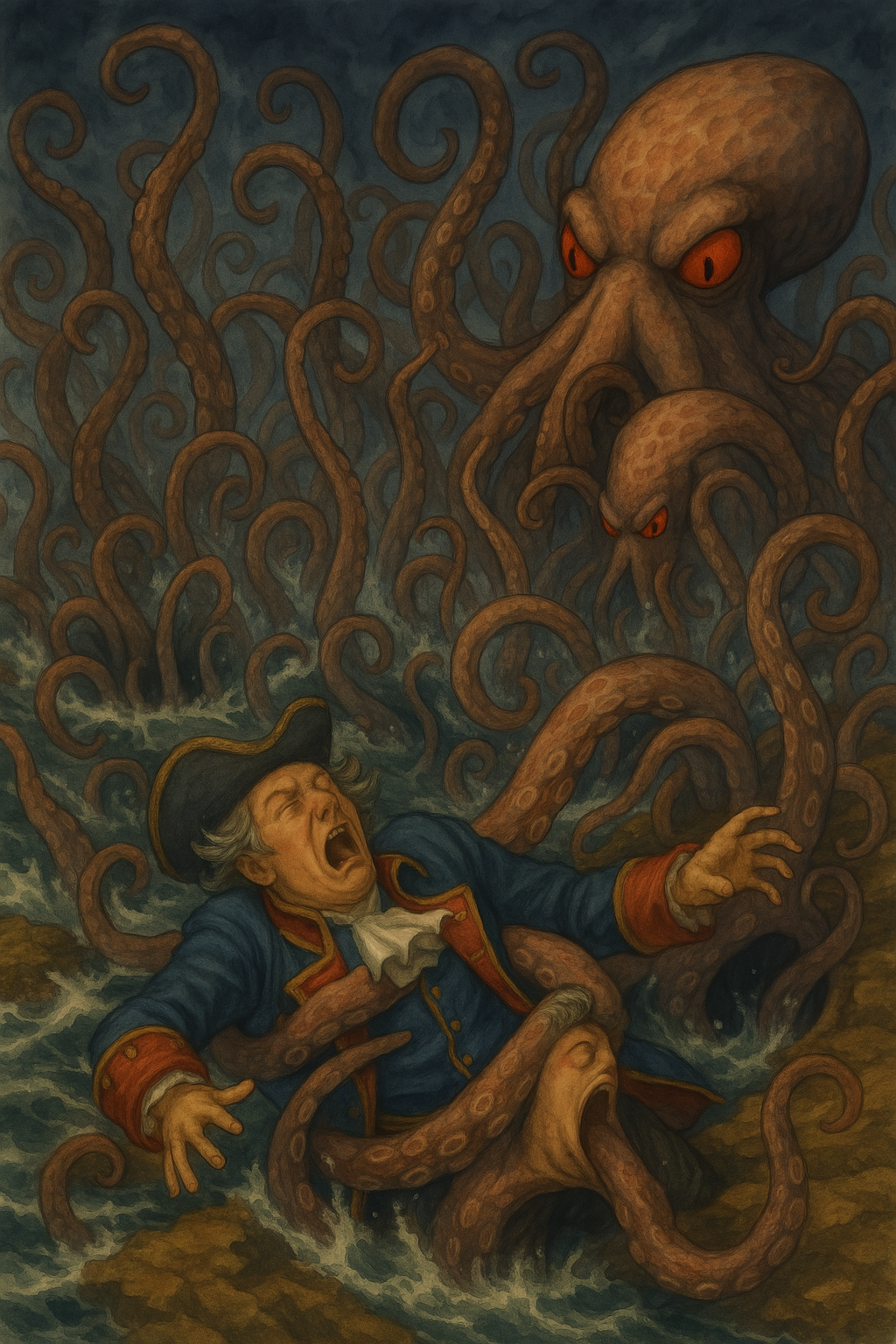
Curaçao (True) Children’s Stories
Watamula’s Blowholes
The name Watamula comes from the Dutch word Watermolen which means “water mill.” It is named after the currents that form whirligigs around the point of Cliff Villa Peninsular. Watamula is the land on the Northwest point of Curacao where natural sea geysers are carved into the coral. Sea waves explode through the bottom of these natural wonders. The holes cut through the limestone cliffs dropping down up to 250 feet (76 meters) to the sea below.
Some say the holes were formed by the constant pounding of the waves on the limestone cliffs over millions of years. Some say by a sea witch.
The Sea Witch of Watamula
Long ago, at the northwestern tip of Curaçao, where the wild sea crashed against towering cliffs and the wind howled through twisted divi-divi trees, there lived a sea witch. Her eyes gleamed like red snapper’s scales, and her arms twisted and curled like the tentacles and head of a giant octopus.
Everyone feared the sea witch, for they knew that when she came to feed in the evening, the waters churned into a deadly whirlpool or “watamula” and many a sea boat had been swallowed by its current.
But Machi, an old grandmother, paid no mind. Every night, she went to the cliffs to fish, casting her line into the deep blue sea.
One evening, as she perched on a rock where the two oceans met, the water below began to swirl. Machi’s fishing line tugged violently. She braced herself, expecting a mighty fish—but then, from the dark waters, the Sea Witch rose. Her red eyes twitched, and her great, curling arms flopped over the rocks.
“Release me, old woman,” the witch screeched.
“No,” Machi said firmly.
The witch writhed and raised her pale fingers. The sea trembled at her touch. “I will break the bones of the earth and stop the tides,” she spat.
Still, Machi did not yield.
The Sea Witch stopped struggling. “If you free me, I vow to protect you. Just call my name, and I will come.”
Machi, knowing that a Sea Witch never speaks false, cut the line. In an instant, the witch was gone, vanishing into the frothing sea.
Time past. And Machi continued to fish at the cliff.
Until one day Governor Nikolaas and his men arrived to build a fort in Watamula. The cliffs were soon swarming with workers. Roads were carved into the rock, thorn bushes torn from the earth, and drills split into the coral rock. The fish vanished from the waters. The deer, owls, and spotted lizards fled.
Villages and fishermen came to Machi for help. And Machi went to speak to the Governor. But the Governor simply scowled back at her and said, “Begone, old woman, begone!”
Machi turned slowly as if to leave and then cried, “Sea Witch, as you have vowed, come and save our land!”
At first, everything was silent. Governor Nikolaas and his men laughed.
Then the waves darkened, and deep below, something ancient stirred. A sound like distant thunder rumbled from beneath the cliffs. Cracks split through the coastline. The ground trembled. Suddenly, with a mighty roar, great jets of seawater exploded through the rock.
From the raging tide, the Sea Witch emerged, her swirling hair lashing like a storm. Her great arms reached through the holes in the shore, grasping and twisting like the roots of the ocean itself.
Governor Nikolaas had no time to flee. With one last roar, the sea rose and swallowed him whole.
To this day, the blowholes of Watamula remain, a sign that the Sea Witch still watches over the land. Some say you can still hear the voice of the governor screaming from the blowholes—a reminder that witches never forget a promise.
Bishop
Isaac and the Bishop




